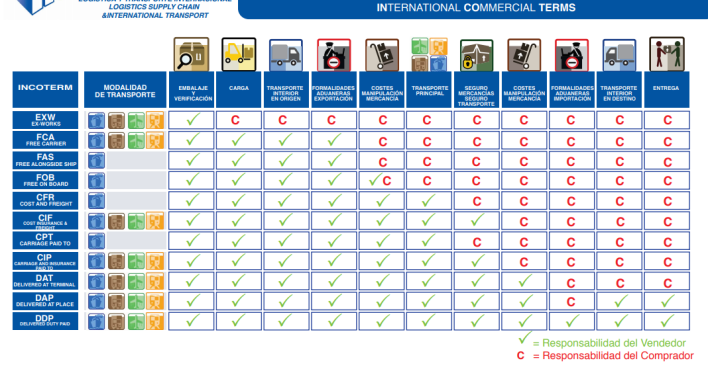This is my last blog and that is why I have decided to write about my professional experience in the logistics sector.
Last year I worked in a company dedicated to the manufacture in distribution brand and co-packing of beers, soft drinks and water. Among the clients of this company are Mercadona, Consum, LIDL, Carrefour … of which we have spoken during this course. I carried out my duties in the logistics department and, among other activities, I was in charge of managing part of the outbound transport from the factory.
Some of the tasks that involve the management of outbound transport is the planning of the load schedule in the facilities. To do so, I had to consider which client I was dealing with (because the quays are classified by clients), the destination and the time of delivery. However, sometimes there were problems in the production line and in the packaging that caused delays and entailed rescheduling the deliveries of the products. Also, on occasions, there were incidents related to transportation, such as punctures, traffic accidents, retentions or delays in the unloading. These situations that can not be anticipated in advance highlight the importance of a good planning.
Personally I have to say that at the beginning the idea of being responsible for the product to arrive correctly to the client scared me, but the knowledge of the existence of INCOTERM 2010 and the use of the Enterprise Resource Planning SAP system made it easier for me to work. The INCOTERM constituted a great discovery during the performance of this work.
The INCOTERM (International Commerce Terms) are terms of three letters that reflect, for both the seller and the buyer, the rules of voluntary acceptance of the conditions of delivery of the goods. Then, we can ask ourselves what the INCOTERM are for: they serve to regulate the expenses, regulate the norms of delivery of the merchandise, regulate the transfer of risks and facilitate the processing in the customs.
There are different types of INCOTERM, therefore, when choosing one, you must take into account the type of merchandise, the type of transport and who hires and pays it, who is obliged to pay for insurance, the place of delivery of the goods, who must pay the import and export customs obligations. As you can see there are many aspects that should be considered. That’s why I’m going to focus on the ones I used the most and that involved the from lower to higher obligation on the part of the seller. They are the following:
– Ex Works (EXW): this system represents few obligations for the seller, because it is limited to putting the goods at the disposal of the buyer in their premises and in a packaging appropriate to the type of transport. On the contrary, the buyer assumes the costs and risks inherent to the transport.
– Free Carrier (FCA): the seller loads the goods if the delivery is done in their premises. If it is to export the seller pays the tariffs. But it is the buyer who chooses the means of transport and the carrier. In this way, the transfer of expenses and risks occurs when the carrier takes charge of the merchandise.
– Free On Board (FOB): the seller places the goods at the disposal of the buyer at the port of embarkation and on board to the designated vessel and carries out the customs procedures if necessary. The buyer chooses the ship, takes care of freight and insurance costs, and assumes the expenses and risks for the loss or deterioration that the merchandise may suffer from its delivery.
– Delivered At Place (DAP): in this case the seller is responsible for the expenses. It closes a contract for the transport and unloading of the goods when arriving at the client. In this term the seller assumes the risks of transporting the goods until they reach their destination. The buyer pays the price of the goods as provided in the sales contract, after receiving it.
So, according to the modality chosen, I had to assign a loading and unloading schedule depending on the destination and the availability of docks (in EXW and FCA), or in addition, I had to contact transportation agencies, so I had to consider the costs to choose the appropriate transport (in DAP).
In the following drawing can be seen what I have explained, and also the others INCOTERMS.

I hope this blog has been of your interest.
Source: https://www.searates.com/reference/incoterms/
